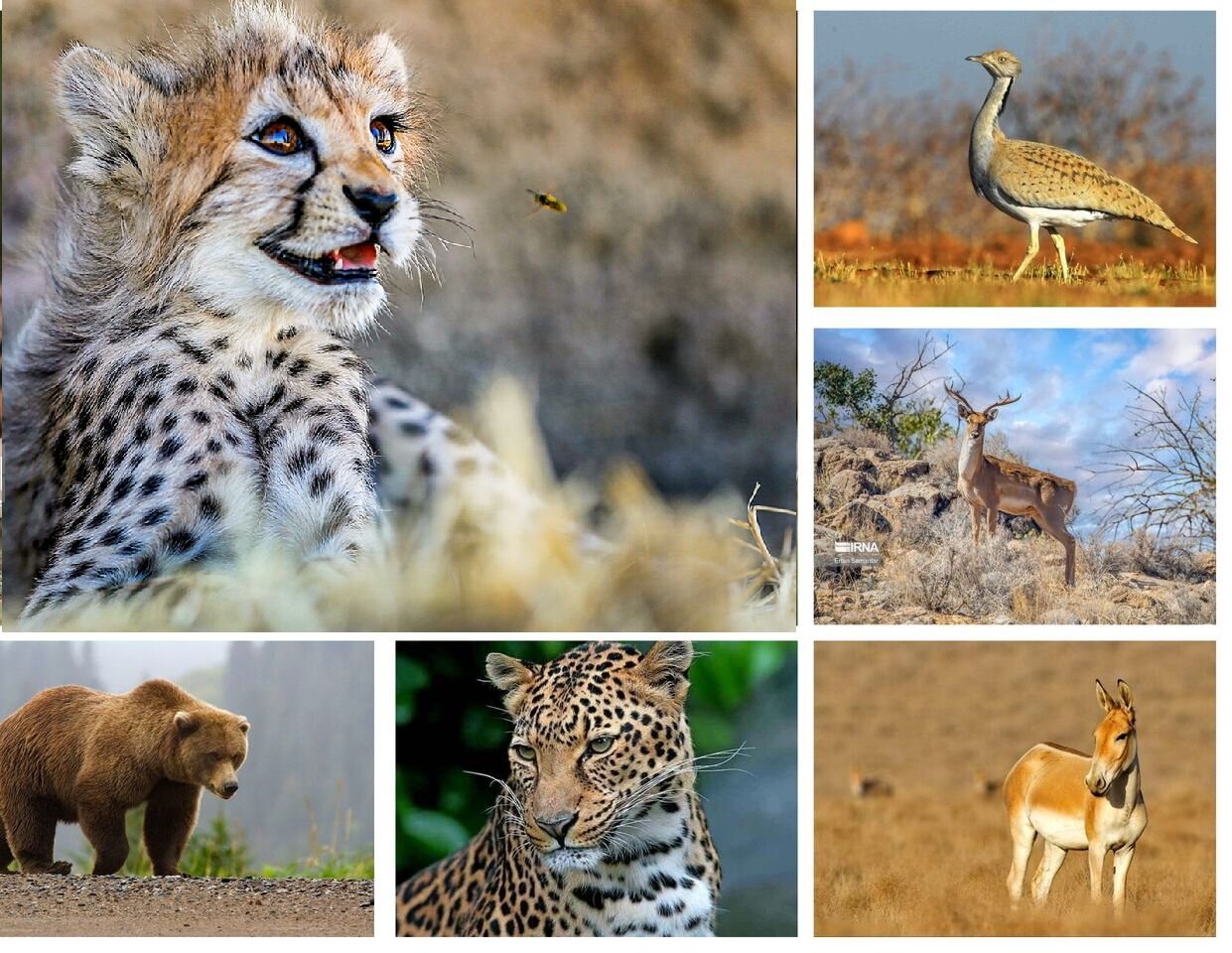DOE to establish endangered species conservation committee

TEHRAN –The Department of Environment (DOE) is planning to organize a committee for the preservation of critically endangered species including cheetahs, black bears, and great bustards.
“The Department of Environment is planning to protect endangered species by establishing conservation committees with the help of non-governmental organizations, as well as fostering cooperation with the public, rangers, experts, and government agencies,” IRNA quoted Hamid Zohrabi, an official with the DOE, as saying.
Endangered species
There are many threats to endangered wildlife species, including mammals, reptiles, amphibians, fish, and birds.
Habitat destruction, fragmentation, and modification caused by human-led activities such as industrial and residential development, logging, crop farming, livestock grazing, mining, road and dam building, and pesticide use have taken an extreme toll on threatened and endangered wildlife populations at an alarming rate.
Currently, about 128 species of animals and vertebrates in the country are at risk of extinction, some of which are not in good condition, and amphibians are the most vulnerable in this area.
Persian zebra, Asiatic cheetah, black bear, and yellow deer are in danger of extinction.
Zebras exist in two habitats in Iran; one is in the Turan protected area in the south of Semnan province, where there are about 250 zebras, and the other is in the Bahramgur protected area in the southeast of Fars province, where 1,200 zebras are kept.
The Persian zebra population is estimated to be around 1,500, although the zebra is considered an endangered species according to both national and international regulations.
Asiatic cheetah ranks second among Iran's endangered species. Including the cheetahs that have probably not been identified, the population of this species in Iran is estimated to be below 30.
Persian yellow deer is also one of the most important species in the world. According to the list provided by the International Union for Conservation of Nature, these deer are in the EN category and the red list, which is considered to be in danger of extinction.
The deer have been released in a limited number of habitats in "Ashk" Island, West Azarbaijan province, and "Dez" National Park, Khuzestan province.
They are also kept in reproduction and breeding centers in Ilam, Yazd, Fars, West Azarbaijan, and Mazandaran provinces.
Asian black bear, which is known as the Baluchi black bear, is another endangered species in the country. It lives mainly in forest areas, especially in mountainous areas at altitudes of 500 to 2,700 meters, and is found in Kerman, Hormozgan, and Sistan-Baluchestan provinces in very low quantities.
Action plans to conserve species
The DOE has developed action plans for the conservation of 23 endangered species and the plans are being implemented in the country.
The plans intend to address species such as cheetah, brown bear, leopard, black bear, Persian yellow deer, Persian zebra, and hunting birds from among 86 endangered species.
According to the DOE’s latest report, 86 species in the country are in danger of dying out.
The Department of Environment is planning to create action plans for 20 more endangered species.
In May, Marzieh Mousavi, an official with the DOE, said that among endangered animal species, bustards and Asiatic cheetahs are in a more critical situation, there are roughly 19 species of bustards and 25 species of cheetahs identified in the country.
Efforts are being made to increase their population through habitat protection and prey management in Turan, Miandasht, and its neighboring areas, she noted.
The DOE is trying to improve the role of the private sector and local communities in creating a more sustainable livelihood and increasing their protection so that if a cheetah steps out of the protected areas, it survives.
MT/MG
Leave a Comment